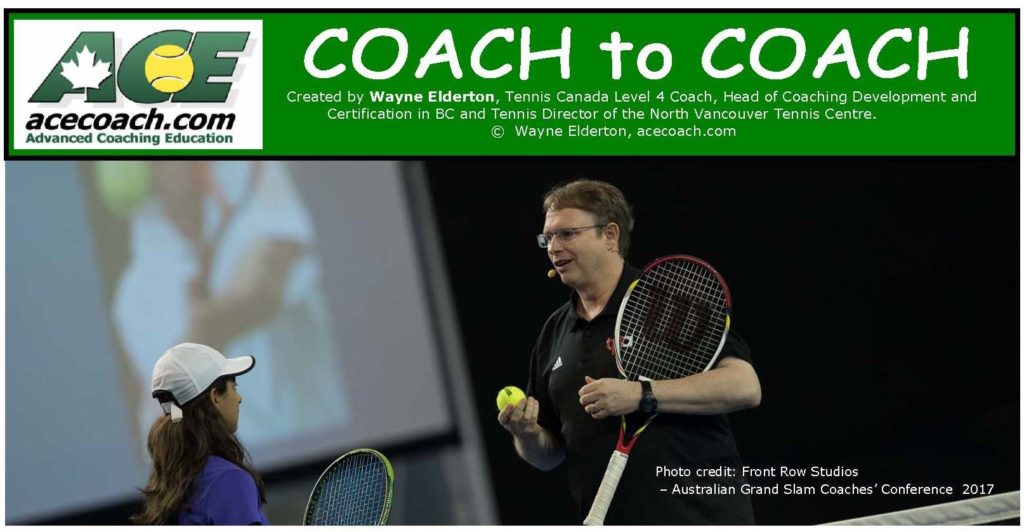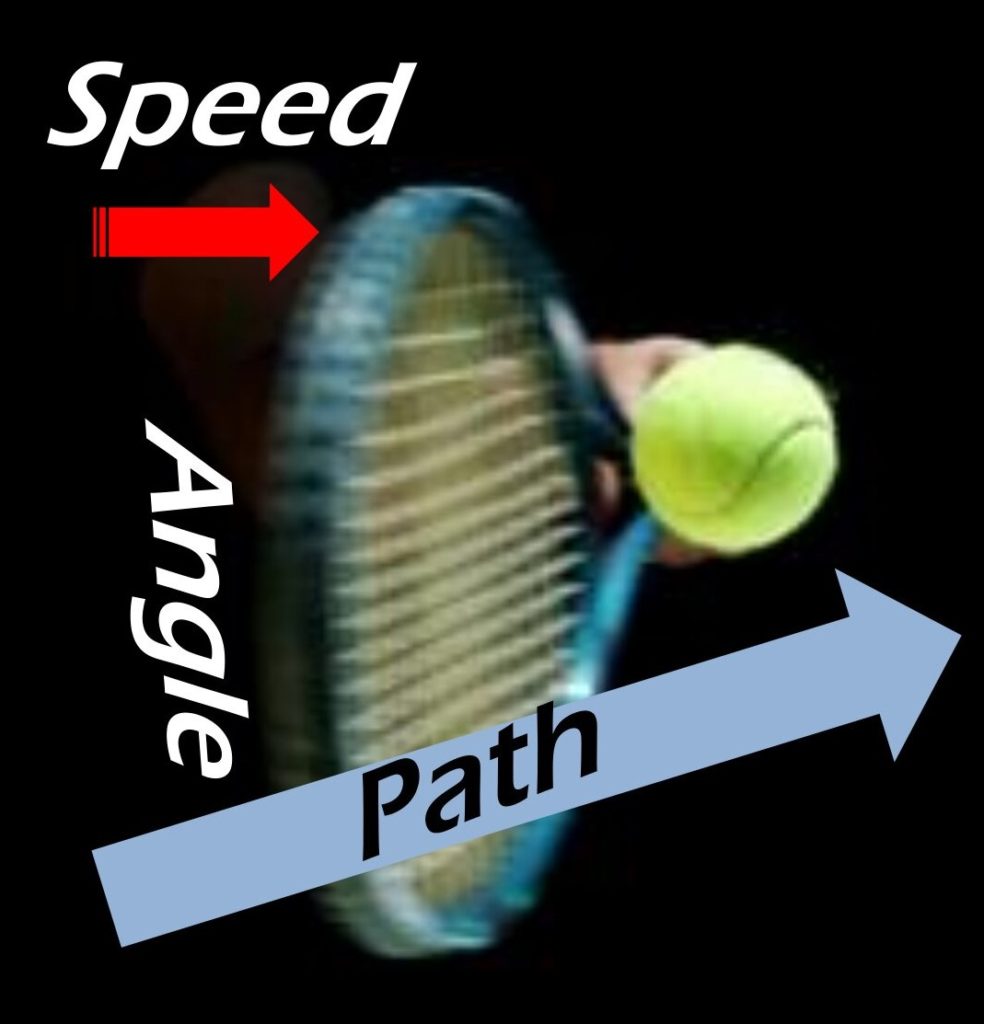
The goal of tennis in its most basic form is to “Make the little round, yellow, fuzzy thing, go where you want it to”. There are only 5 ways to manipulate the ball in tennis:
- Height
- Direction
- Distance
- Speed
- Spin
These are called the 5 Ball Control Characteristics. To master tennis, a player must learn how to receive each of these 5 characteristics and send them as well.
To manipulate any of the 5 Ball Control Characteristics, the first step is to imagine a 3-dimensional ‘Ball Control Box’ surrounding your impact of the ball. Every shot in tennis whether groundstroke, volley, or serve, requires the racquet to ‘pass’ through that box. What the racquet does at the impact allows a player to control all 5 characteristics. We can modify the word P.A.S. to help remember all the elements that control the ball.

Path of the racquet through the impact, which includes the vertical path of the racquet (e.g. High to Low, Low to High, Level) and the path on the horizontal plane (moving around in a circle, extending straight towards the target, etc.)
Angle of the racquet at the impact which includes both the vertical angle (how open or closed to the sky), and horizontal angle (how much the racquet face is angled to the right or left).
Speed of the racquet through the impact which includes if the racquet is accelerating, decelerating, or maintaining speed.
The P.A.S. Principles are a technical coaching ‘power tool’. They are based on the physics of the ball and racquet interaction. They directly determine what the ball does (or doesn’t) do. No shot can go where it is intended if the P.A.S. for the shot is incorrect and no ball can do something unintended if the P.A.S. for the shot is correct.
Every shot in tennis is a ‘recipe’ combining varying degrees of each P.A.S. Principle. Even a complex ball control like spin is simply a combination of the appropriate amounts P.A.S. For example, ‘topspin’ would result if the racquet path was low to high, the angle was vertical (or slightly ‘closed’), and the speed was fast (With the same racquet path, more speed increases the amount of spin, less speed decreases it).

This is in contrast to a coach telling their player to use indirect methods to control the ball. For example, ‘bend your knees more’ to get height. ‘Line your body up’ to control direction, ‘turn your hips’ for more power, etc. Again, this feedback may not be wrong however, it doesn’t actually control what the ball does. Players using body movement to control the ball may experience frustration as, they can do exactly what the coach said and not have the proper result.
Since it is every players goal to control the ball, coaches need to be masterful at practically applying the P.A.S. Principles. One of a coach’s main learning goals needs to be to help players understand and use them as well. For players, the P.A.S. Principles become one of the key problem-solving tools they need for successful tennis. For example, if an opponent is on one side of the court and the player wants to direct the ball to the other side, they need to know that the angle of their racquet at impact is a key determining factor.
The P.A.S. Principles are a technical coaching ‘Power tool’
EXPLORATION DRILLS
Starter Players: Start with a ‘Mini-Tennis’ rally (service line to service line) then progress to ¾ court, then baseline to baseline. At each stage explore each P.A.S. principle after every error. For example, if the ball goes into the net, which of the principles was incorrect? Fix it and see if it works. The goal is to be able to ‘coach’ yourself and solve Ball Control problems while playing.
Experienced Players: For more advanced training the goal is to add new shots to your repertoire by figuring out which P.A.S. principles apply. For example, to pass a player at net you may want to ‘dip’ the ball with a crosscourt angle. What would the path be, the racquet angle, the speed? New serves and volleys can be explored with this method as well.
Leave a Reply